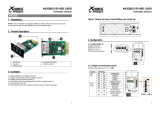
Ecograph T, RSG35 Table of contents
Endress+Hauser 3
Table of contents
1 Document information .............. 5
1.1 Document function ..................... 5
1.2 Symbols used .......................... 5
1.3 Terminology .......................... 6
1.4 Documentation ........................ 7
2 Basic safety instructions ............ 7
2.1 Requirements concerning the staff .......... 7
2.2 Designated use ........................ 7
2.3 Workplace safety ....................... 7
2.4 Operational safety ...................... 8
2.5 Product safety ......................... 8
2.6 Safety information for table version (option) ... 8
2.7 IT security ............................ 8
3 Product description ................. 9
3.1 Product design ......................... 9
4 Incoming acceptance and product
identification ....................... 9
4.1 Incoming acceptance .................... 9
4.2 Product identification .................... 9
4.3 Storage and transport .................. 10
5 Installation ....................... 10
5.1 Mounting requirements ................. 10
5.2 Mounting the measuring device ........... 11
5.3 Post-mounting check ................... 12
6 Electrical connection .............. 12
6.1 Connection conditions .................. 12
6.2 Connection instructions ................. 12
6.3 Connecting the measuring device .......... 13
6.4 Post-connection check .................. 19
7 Operation options ................. 21
7.1 Overview of operation options ............ 21
7.2 Structure and function of the operating
menu .............................. 21
7.3 Measured value display and operating
elements ............................ 24
7.4 Access to the operating menu via the local
display ............................. 27
7.5 Device access via operating tools .......... 27
8 System integration ................ 29
8.1 Integrating the measuring device in the
system ............................. 29
9 Commissioning .................... 31
9.1 Function check ....................... 31
9.2 Switching on the measuring device ......... 31
9.3 Setting the operating language ............ 31
9.4 Configuring the measuring device (Setup
menu) .............................. 31
9.5 Advanced settings (Expert menu) .......... 33
9.6 Configuration management .............. 34
9.7 Simulation ........................... 34
9.8 Protecting settings from unauthorized
access .............................. 35
10 Operation ......................... 36
10.1 Displaying and modifying current Ethernet
settings ............................. 36
10.2 Reading device locking status ............. 36
10.3 Reading measured values ................ 37
10.4 Reading measured values via the web server .. 37
10.5 Data analysis and visualization using analysis
software provided ..................... 39
10.6 Changing the group .................... 41
10.7 SD card / USB stick .................... 41
10.8 Showing data logging ................... 43
10.9 Signal analysis ........................ 44
10.10 Search in trace ........................ 44
10.11 Changing the display mode .............. 45
10.12 Adjusting the brightness of the display ...... 45
11 Diagnostics and troubleshooting ... 46
11.1 General troubleshooting ................. 46
11.2 Troubleshooting ...................... 46
11.3 Diagnostic information on the local display ... 47
11.4 Pending, current diagnostic messages ....... 51
11.5 Diagnosis list ......................... 51
11.6 Event logbook ........................ 51
11.7 Device information .................... 51
11.8 Diagnostics of measured values ........... 51
11.9 Diagnostics of outputs/relays ............. 51
11.10 Simulation ........................... 52
11.11 Initialize modem ...................... 52
11.12 Resetting the measuring device ........... 52
11.13 Firmware history ...................... 53
12 Maintenance ...................... 53
12.1 Updating the device software ("firmware") .... 53
12.2 Instructions for enabling a software option ... 53
12.3 Cleaning ............................ 53
13 Repair ............................ 54
13.1 General notes ........................ 54
13.2 Spare parts .......................... 54
13.3 Return .............................. 56
13.4 Disposal ............................ 56






















